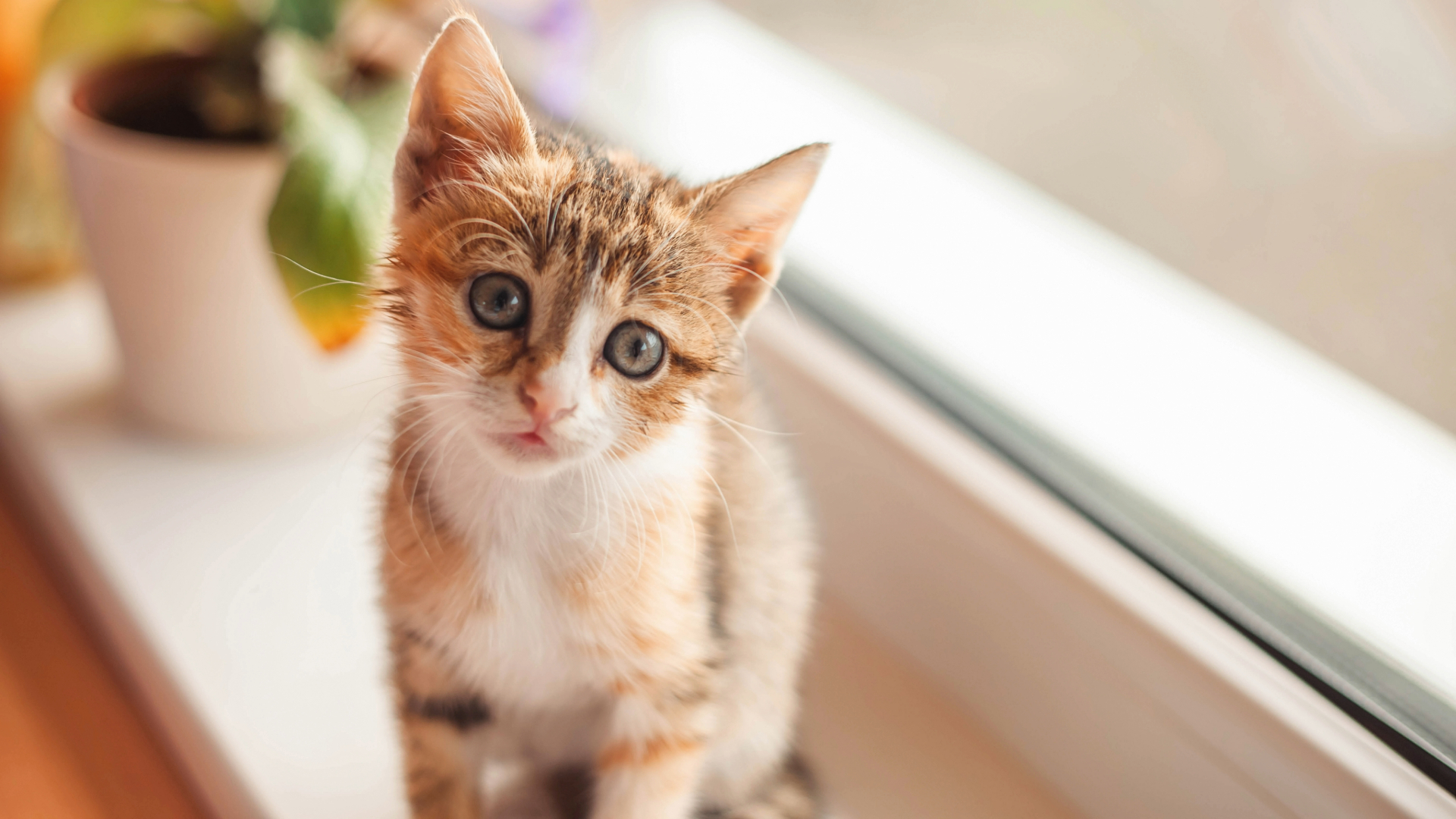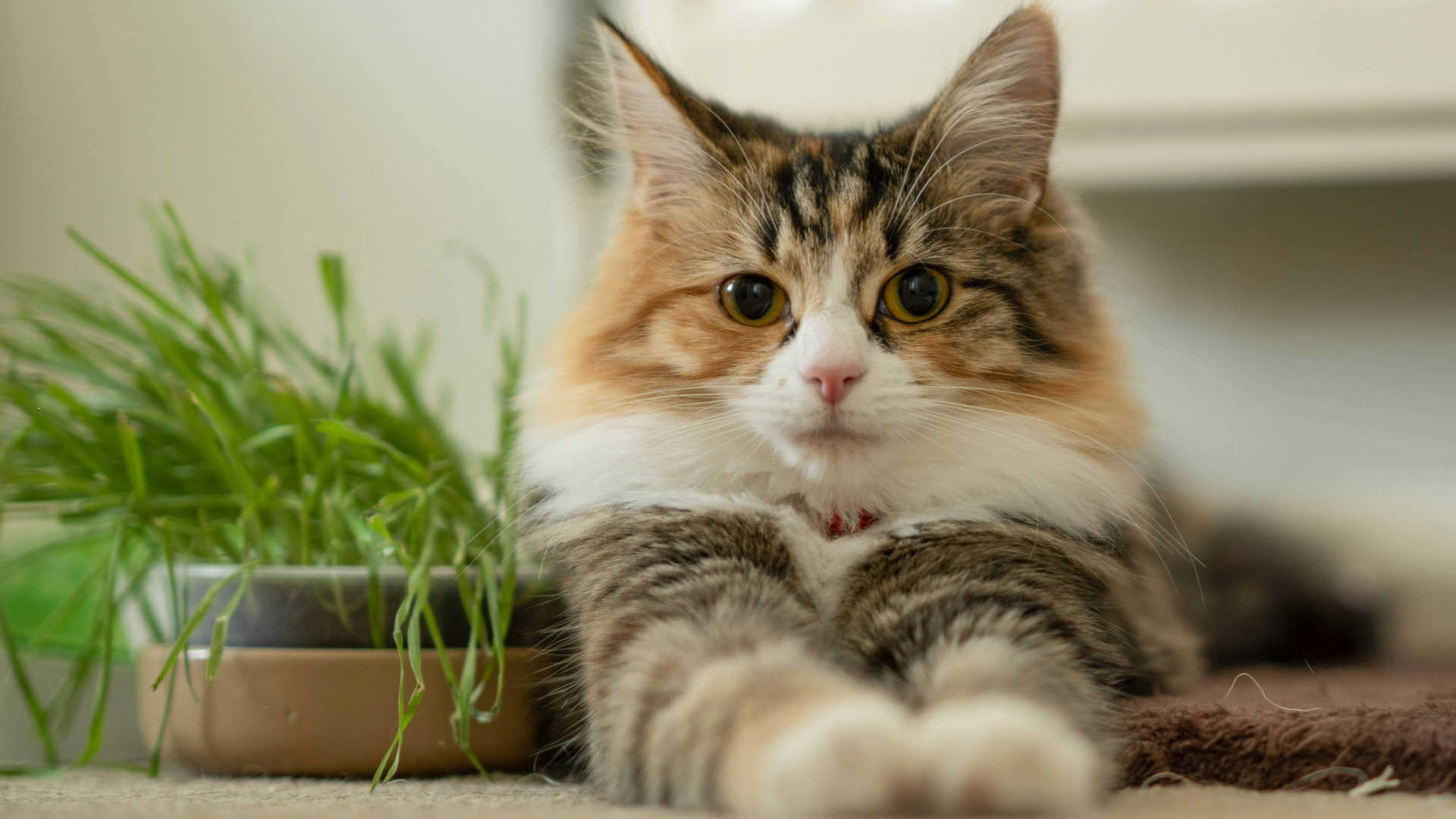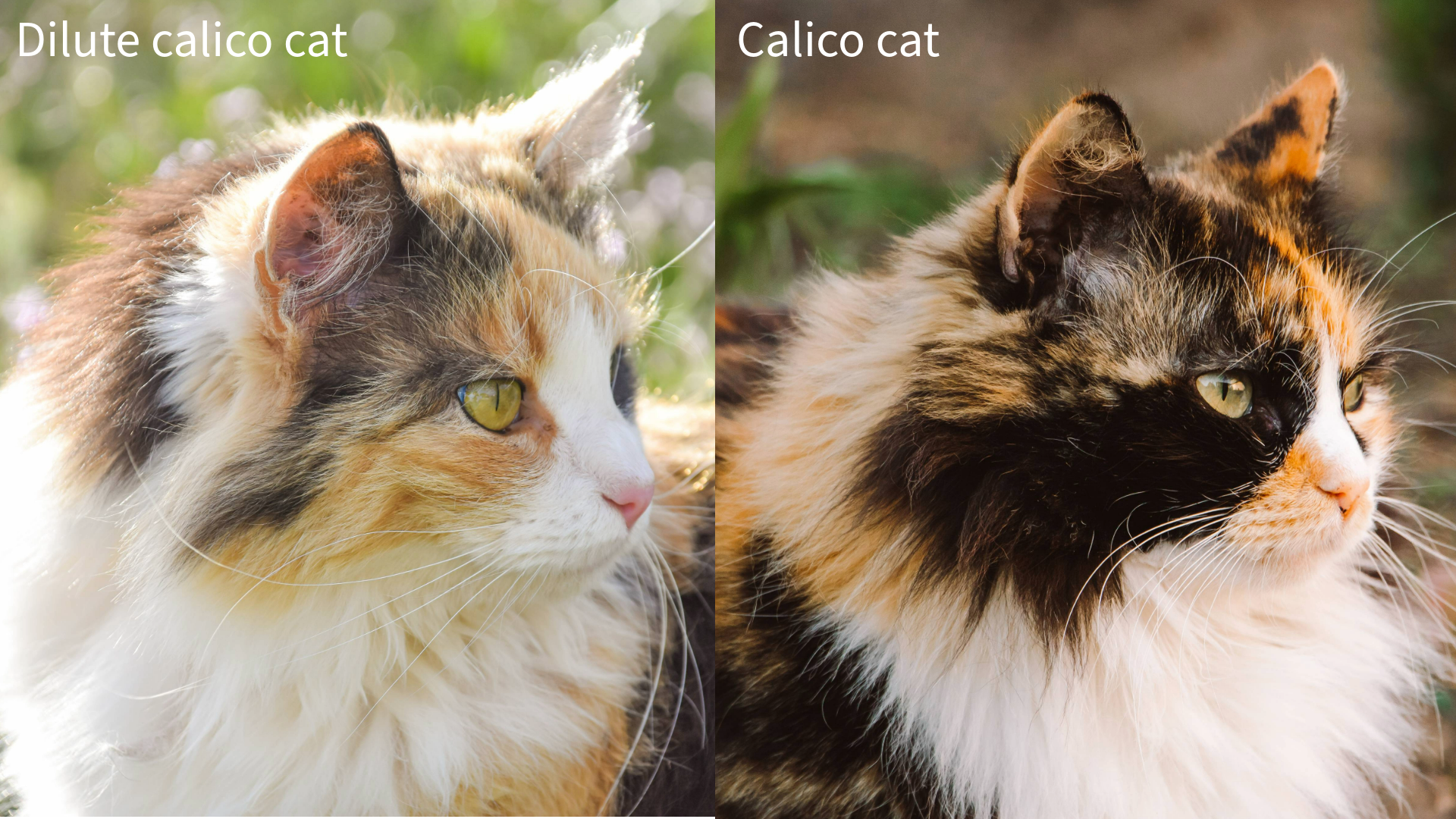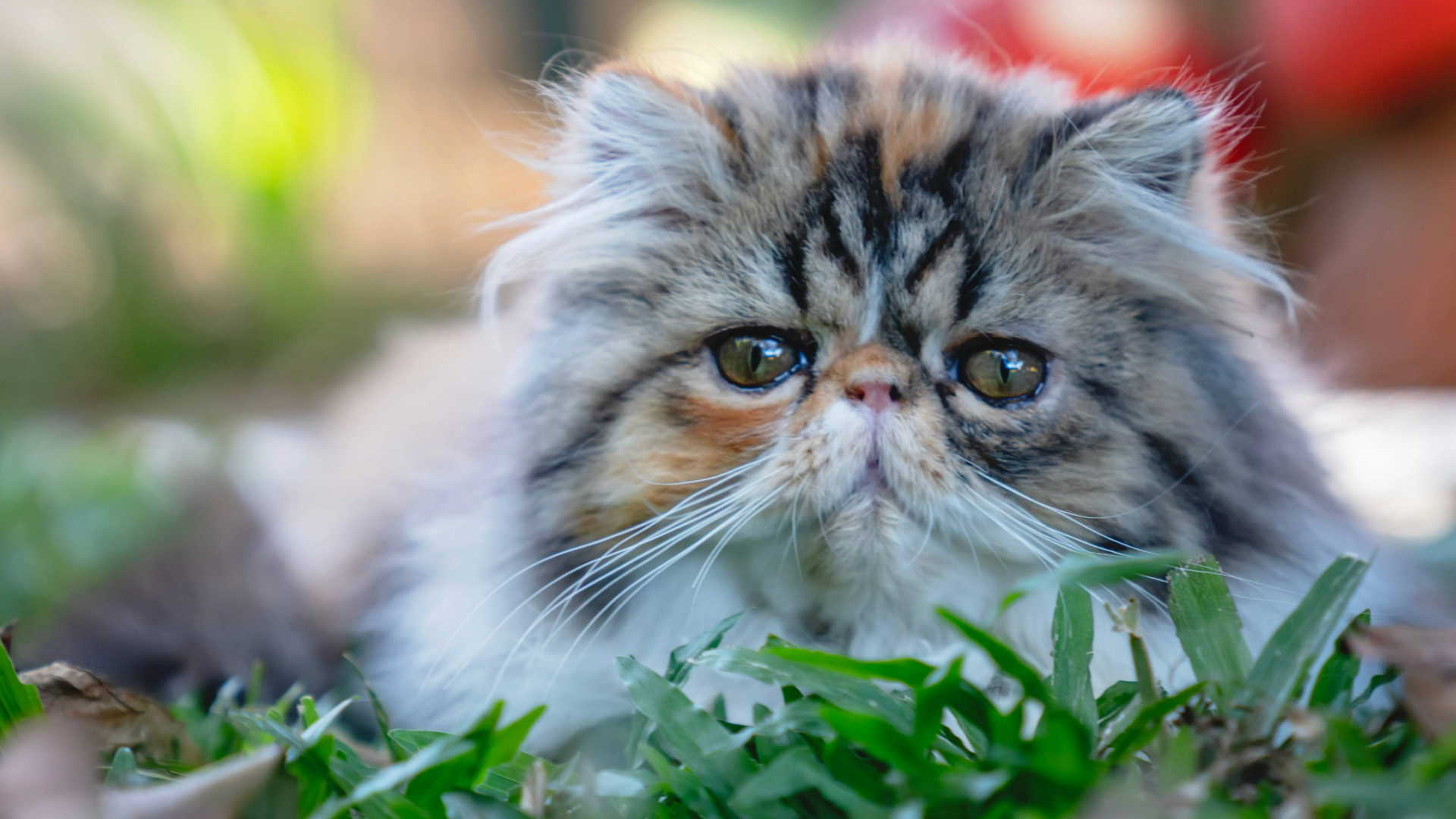
While calico cats have an orange, black and white coat, dilute calico cats have a slightly paler variant which looks blue-grey, pale ginger, and white or cream. Although their appearances differ slightly, both types are otherwise the same.
Since these cats are extremely rare (especially the dilute calico), they are seen as a sign of good luck and fortune in many cultures. Sailors historically brought them on ships for protection, and Japanese folklore believes they even hold supernatural powers.
So, what causes a dilute calico cat? Below, expert vet Dr Rebecca MacMillan reveals the answer, as well as some other fun facts about these beautiful felines, including which breeds can become one and just how rare they are.
What is a dilute calico cat?
In the case of a standard calico cat, the coloring is due to “X chromosome inactivation”, a genetic code found on the X chromosome is what gives the standard calico cat the distinct black and orange patches that they sport on their coat.
Dilute calico cats have the same genetic code but they also inherit the dilution gene from their parents. This gives them the same tri-color patterning as the standard calico but it is much softer in appearance.
Interesting fact: a standard female calico may carry the dilute calico gene without having turned out to be a dilute calico herself. If she partners with a rare male calico or any other male who carries the dilute calico gene, they can produce a dilute calico kitten.

Are dilute calico cats rare?
Yes. Only one in every 1,000 cats is born a standard calico and dilute calico cats are even harder to come by.
One of the reasons for this is that the dilution gene is what’s known as a recessive gene. That means that a more dominant gene can mask it and a kitten would need to inherit the dilution gene from both parents to be born a dilute calico.
Because the dilution gene is recessive and can be overridden by a dominant gene, it’s also very hard to specifically breed dilute calico cats so, consider yourself very lucky indeed if you become the pet parent to one of these beauties.
Dr. MacMillan says: "Calico cats are already uncommon, but dilute calicos are especially rare as it takes the right genetic combination to make it happen.
"Firstly, they need the coding for calico patterning and then secondly, they also need genetics that determine the dilution as well. Genes that control dilution alter the amount of melanin or pigment present, giving these cats a more washed-out appearance than regular calicos."
What’s the difference between a calico and a dilute calico?
Color, quite simply. Standard calico and dilute calico cats have a tri-color coat but the difference between them is the strength of the colors. A dilute calico cat's fur has much softer colors of gray-blue and cream, along with patches of white and a dilute calico cat can have a coat that is tinged with gold or silver colorings.

What cat breeds can be dilute calico?
Since the dilute calico is named for its coat pattern and isn’t a breed in and of itself, there’s a fairly long list of cat breeds both short-haired and long-haired breeds that can produce beautiful tri-colored kittens. They include:
- Maine Coon
- Persian
- Norwegian Forest Cat
- American Bobtail
- Japanese Bobtail
- Manx
- Scottish Fold
- American Shorthair
- British Shorthair
- Exotic shorthair
- Ragdoll
- Turkish Angora
- Siberian
- Devon rex

Can dilute calico cats be male?
Most calico cats are female and males are extremely rare. In fact, given that 99.9% of all calico cats are female and only one in every 1,000 cats born is a standard calico, you can imagine how scarce male dilute calicos are!
The same genetic code that produces the beautiful coat color of the standard and dilute calico cats is also what determines their gender. Female cats have two X chromosomes, while males have one X chromosome and one Y chromosome. This means that male cats can display either the black or orange gene but not both.
However, in extremely rare cases, known as Klinefelter Syndrome, a calico cat may be given an extra X chromosome which would then produce a male calico. On top of that, they would also need to inherit the dilution gene to be a male dilute calico.
Dr. MacMillan says: "I’m yet to see a male calico myself, let alone a dilute male calico - it will be an exciting day at work if I do!"
What's the difference between a calico cat and a tortoiseshell cat?
While tortoiseshell cats have two colors in their coat (red/orange and black), calico cats have three.
Dr. MacMillan says: "Tortoiseshells and calicos are not breeds in their own right, these are terms that describe the color patterns in a cat’s fur. The genetics work in a similar way though, with most tortoiseshells being female, due to those XX chromosomes again."
Found this interesting? Read all about hybrid cat breeds and chimera cats
Edited by Georgia Guerin and Alexis de Leaver.







